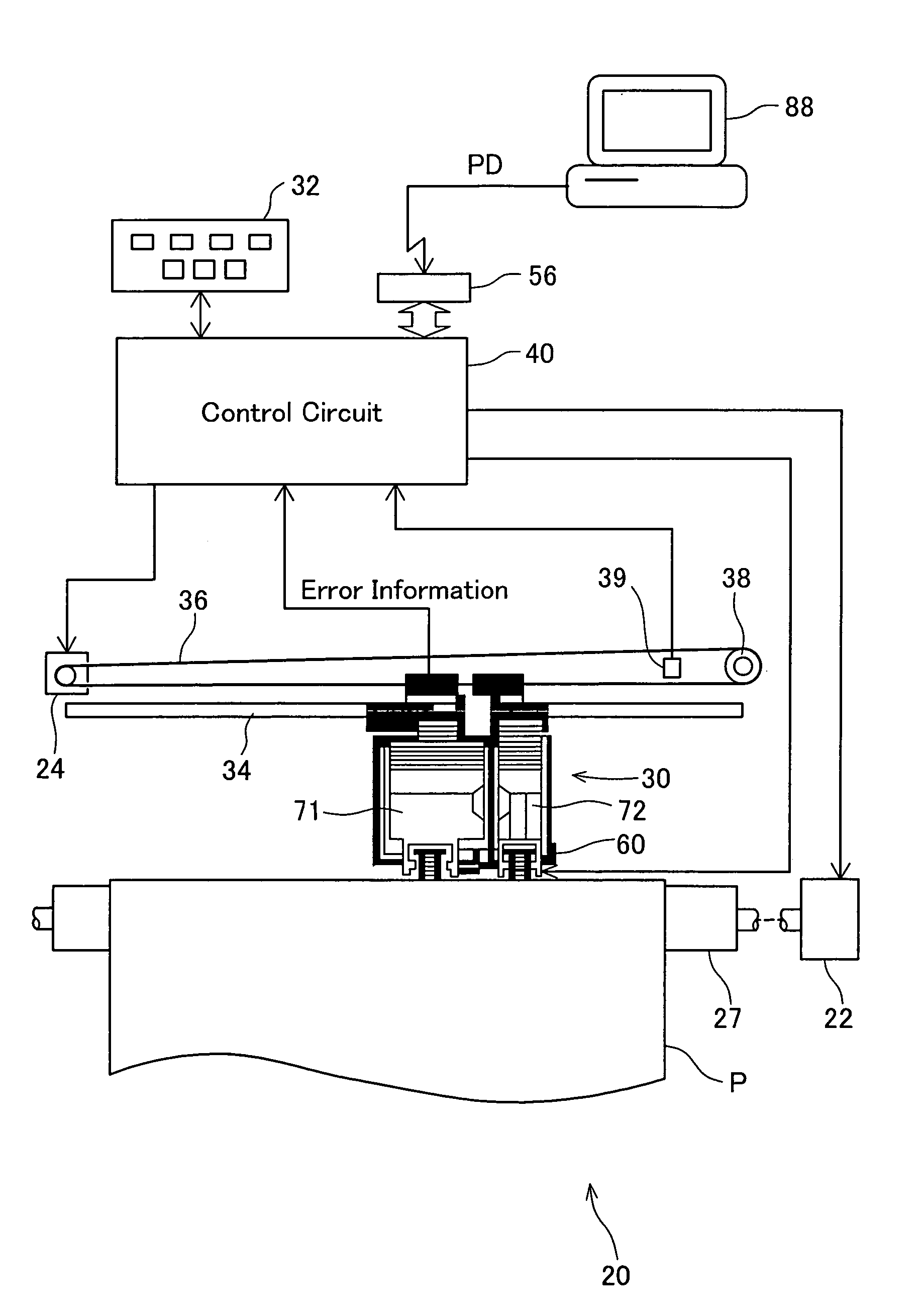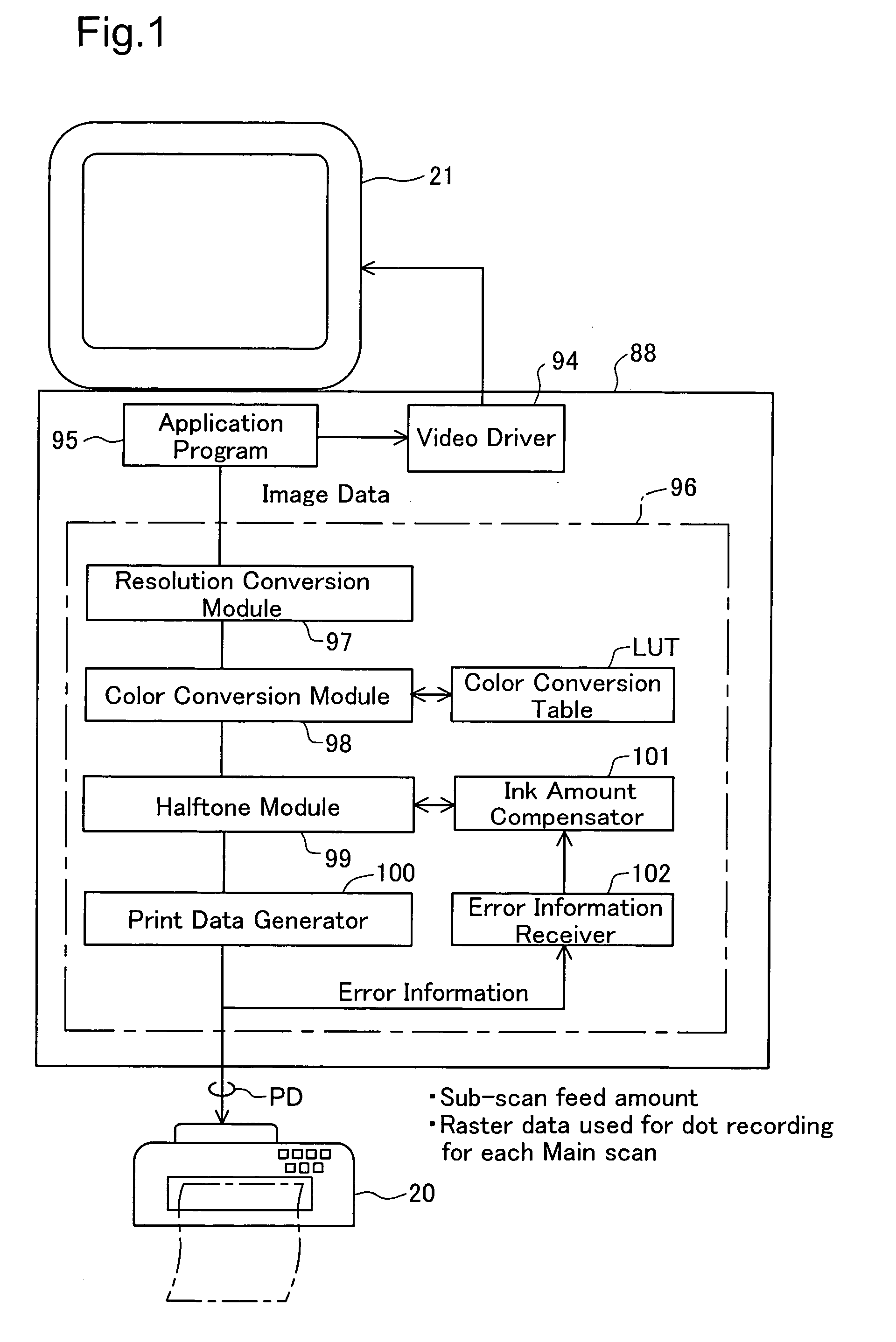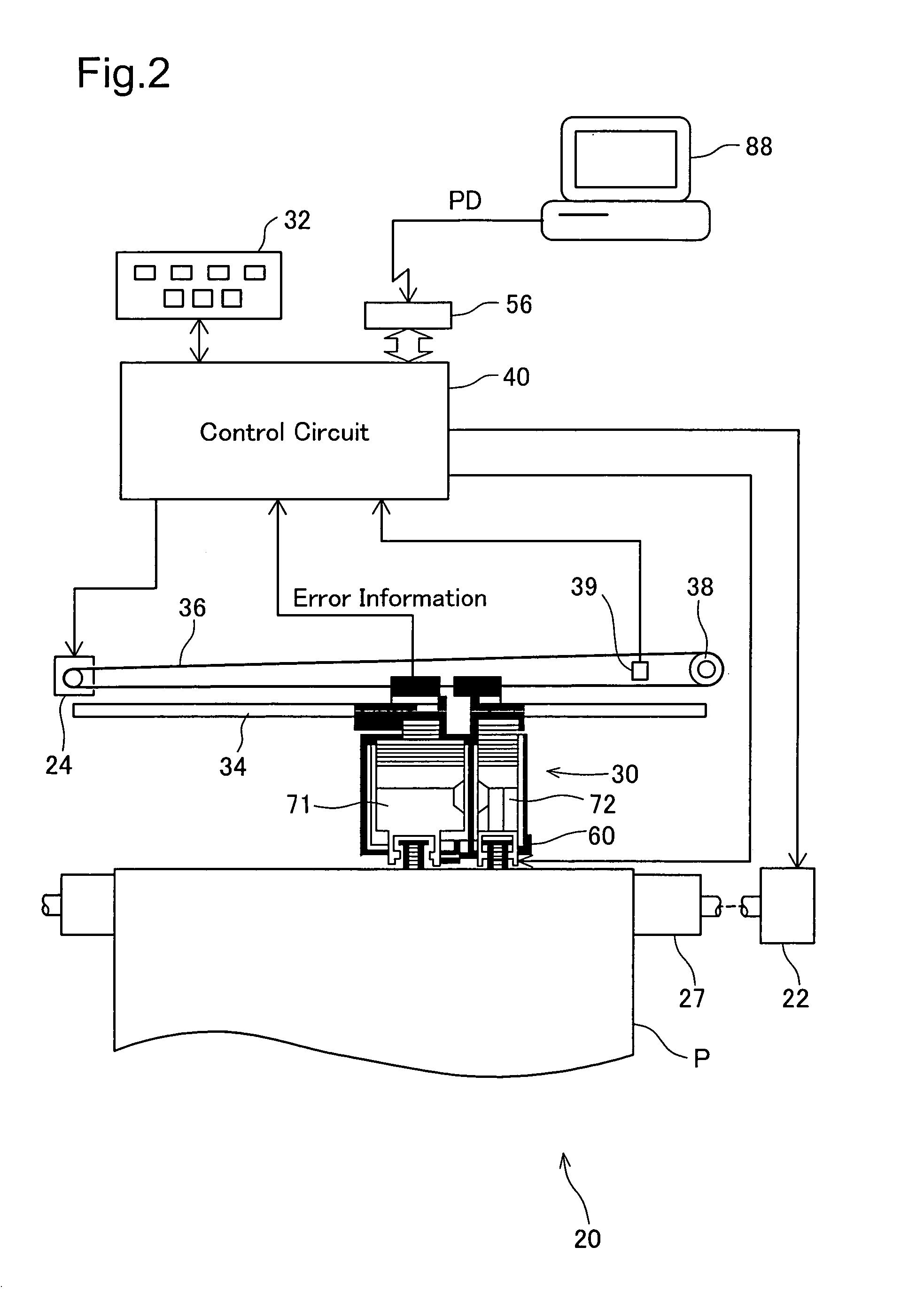Printing compensating for jetting amount for each of multiple types of ink drops with different sizes
a technology of ink drop and jetting amount, applied in the field of printing images, can solve the problem of not being able to compensate for errors in ink amount in a detailed manner, and achieve the effect of improving color reproducibility
- Summary
- Abstract
- Description
- Claims
- Application Information
AI Technical Summary
Benefits of technology
Problems solved by technology
Method used
Image
Examples
first embodiment
C. Compensation of Ink Quantity in the First Embodiment
[0070]FIG. 10 is an explanatory diagram showing a compensating method of a dot recording rate table performed in the first embodiment of the present invention. Curves SD, SDc in FIG. 10(a) show dot recording rate of small dots, and curves MD, MDc show dot recording rate of medium dots and curves LD, LDc of large dots, respectively. Dotted lines SD, MD, LD show dot recording rates prior to compensation, and solid lines SDc, MDc, LDc show dot recording rates after compensation. In this embodiment, by means of compensating the dot recording rate table, variation in ink amount due to individual error of print head unit 60 and so forth is compensated for each type of dot.
[0071]FIG. 10(b) shows target values of ink amount of ink drops for forming dots of each size, error information, estimated values of ink weight, compensation coefficients, and compensated ink amount. Target values of ink amount are ink weight of ink drops when it is...
second embodiment
D. Compensation of Ink Quantity in the Second Embodiment
[0076]In the second embodiment, a point of difference with the first embodiment, in which compensation is done by multiplying level data for dots of each size by compensation coefficients, is that compensation is done by adjusting tone values of multi-tone data.
[0077]FIG. 11 is an explanatory diagram showing a dot recording rate table and ink ejection amount in the second embodiment of the present invention. FIG. 11(a) is a diagram showing a relationship between multi-tone data tone values and dot recording rates for dots of each size; curves SD, MD, LD are the same as the dotted lines SD, MD, LD in FIG. 10(a). FIG. 11(b) is an explanatory diagram showing a relationship between tone values and ink weight ejected in a predetermined region. This diagram is a diagram generated using estimated values of ink drop weight from the chart in FIG. 10(b). As will be understood from this diagram, as tone value increases from 0 towards 255,...
third embodiment
E. Compensation of Ink Quantity in the Third Embodiment
[0095]The third embodiment has in common with the second embodiment the point that ink amount can be compensated by adjusting tone value, without changing the combination of dot recording rates for each size of dot per se. However, the method for adjusting tone value in this embodiment is different from the second embodiment.
[0096]FIG. 14 is an explanatory diagram showing a compensation method for error of ink amount in the third embodiment of the present invention. Dotted line Wi is a line showing a relationship between tone value and theoretical ink ejection amount, and solid line We is a line showing a relationship between tone value and estimated ink ejection amount. Solid line We and dotted line Wi are respectively the same as solid line We and dotted line Wi shown in FIG. 12(a).
[0097]In the present embodiment, tone value is adjusted in the following manner. For example, where the inputted input tone value is G, the theoret...
PUM
 Login to View More
Login to View More Abstract
Description
Claims
Application Information
 Login to View More
Login to View More - R&D
- Intellectual Property
- Life Sciences
- Materials
- Tech Scout
- Unparalleled Data Quality
- Higher Quality Content
- 60% Fewer Hallucinations
Browse by: Latest US Patents, China's latest patents, Technical Efficacy Thesaurus, Application Domain, Technology Topic, Popular Technical Reports.
© 2025 PatSnap. All rights reserved.Legal|Privacy policy|Modern Slavery Act Transparency Statement|Sitemap|About US| Contact US: help@patsnap.com



